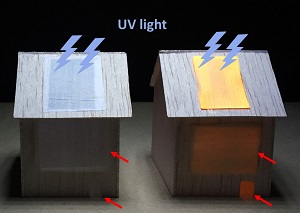FOR IMMEDIATE RELEASE

“Evidence for Large Amounts of Brown Carbonaceous Tarballs in the Himalayan Atmosphere”
Environmental Science & Technology Letters
Some people refer to the Himalaya-Tibetan Plateau as the “third pole” because the region has the largest reserve of glacial snow and ice outside of the north and south poles. The glaciers, which are extremely sensitive to climate change and human influence, have been retreating over the past decade. Now, researchers reporting in ACS’ Environmental Science & Technology Letters have detected light-absorbing “tarballs” in the Himalayan atmosphere, which could contribute to glacial melt.
Burning biomass or fossil fuels releases light-absorbing, carbonaceous particles that can deposit on snow and ice, possibly hastening the melting of glaciers. Previous research has shown that one type of particle, called black carbon, can be transported long distances by wind to the Himalayan atmosphere. But much less is known about the presence of brown carbon, a particle that can form tarballs –– small, viscous spheres consisting of carbon, oxygen and small amounts of nitrogen, sulfur and potassium. Weijun Li and colleagues wanted to see what types of individual aerosol particles were present in air samples taken at a remote, high-altitude research station on the northern slope of the Himalayas.
Using electron microscopy, the researchers unexpectedly found that about 28% of the thousands of particles in the air samples from the Himalayan research station were tarballs, and the percentage increased on days with elevated levels of pollution. Analyzing wind patterns and satellite data revealed that a dense array of active fire spots, corresponding to large-scale wheat-residue burning on the Indo-Gangetic Plain, occurred along the pathways of air masses that reached the Himalayan research station during sampling. Through modeling calculations, the team estimated that tarballs deposited on glacial surfaces could contribute a significant warming effect. As a result, future climate models should consider the long-range transport of tarballs to the Himalayas, the researchers say.
The authors acknowledge funding from the National Natural Science Foundation of China, the China Postdoctoral Science Foundation, the Research Funding of School of Earth Sciences of Zhejiang University,
To automatically receive press releases from the American Chemical Society, contact newsroom@acs.org.
Note: ACS does not conduct research, but publishes and publicizes peer-reviewed scientific studies.
Note: ACS does not conduct research but publishes and publicizes peer-reviewed scientific studies.




